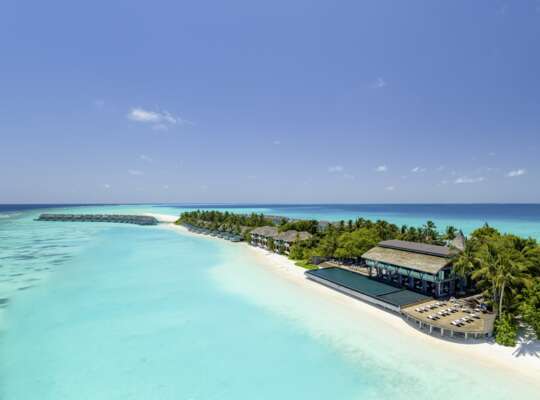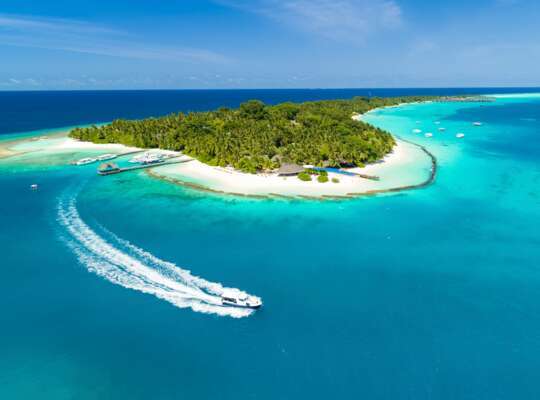Malta and Sicily are both sun-soaked Mediterranean islands packed with history, first-class food and dramatic coastlines. But don’t be fooled into thinking they’re interchangeable. Malta is much smaller than Sicily, offering a compact destination that’s ideal for a short escape.
Travellers who like to take things slow and really get under the skin of a place should go for Sicily. Due to its larger size it’s more diverse, with a mix of laid-back small towns and buzzy cities to explore. It’s also a foodie haven, with plenty of must-try local dishes to sample. We’re big fans of both of these Mediterranean getaways, which is why we've put together this handy Malta vs Sicily travel guide to help you choose between the two.
Getting there & getting around: Sicily vs Malta
There are direct flights from the UK to Malta year-round. Its compact size means you can easily get around on foot and by public transport. Most of the sights are comfortably connected by buses and ferries take travellers to Gozo, Malta’s sister island, multiple times a day.
Direct flights from the UK to Sicily land at Palermo and Catania. Public transport will get you around the big cities, but you’ll want to hire a car or book private tours to explore beyond the larger towns. Smaller cars are generally recommended so you can squeeze between the narrow, historic streets – just make sure to check your luggage fits in the back.
Vibe & pace
Malta is relaxed and easy-going with plenty of rich history to discover. There might be even a few things you didn’t know about Malta. With English widely spoken (it’s one of the country’s official languages) and a well-organised public transport system, it’s very easy to navigate.
Sicily’s vibe varies dramatically depending on where you visit. In Palermo, you’ll be caught up in the bustle of both your fellow tourists and the everyday lives of busy Sicilians. Out in the tranquil hilltop towns, like Ragusa and Modica, you’ll find a slower pace of life, while the island’s rugged shorelines serve up dramatic views of the big blue.
Things to do
Malta
The first thing to do when you arrive in Malta is take a stroll along the charming cobblestone streets of Valletta, Malta’s walled capital. Known for its medieval history and Baroque architecture, a visit to the famous St John’s Co-Cathedral, with its exquisitely preserved Caravaggio paintings, is a must. Afterwards, head to the Grand Harbour for sweeping views across to the historic Three Cities.
Hop on a boat to the Blue Lagoon on Comino, where you can explore caves and hidden beaches, or book one of the harbour cruises for a different perspective on the city. Set off on one of Malta's most popular coastal trails from the fishing village of Marsaskala to St Peter’s Pool, a natural pool where you can jump off the surrounding cliffs and into the sparkling turquoise water.
Pay a visit to the UNESCO-listed Megalithic Temples, which date back to around the 3rd millennium BC (even older than the pyramids!). Then head to the ancient walled city of Mdina, once the capital of the island. Still populated, walking through the historic stone archway feels like stepping back in time, as you wander the maze of tiny lanes. The Game of Thrones vibes are strong here too – hardly surprising when you learn the city served as a major filming location for the epic fantasy series.
Opposite Valletta, on the other side of the harbour, lie Malta’s Three Cities. Vittoriosa, Senglea and Cospicua all have their own individual charm and offer a window into the island’s rich history. For a more laid-back vibe, take the short ferry ride to Gozo, where you can lounge on secluded beaches, explore reefs and shipwrecks on a scenic dive and get a glimpse of traditional village life.
Sicily
It’s hard not to notice looming Mount Etna as soon as you arrive in Sicily and climbing the iconic mountain is a bucket-list item for many travellers. Hike or take 4x4 tours up the volcano (just make sure you’re prepared with warmer clothes for the chilly peak). Sip your way around one of the wineries in the region and follow it up with a local cooking class where you can learn how to make pasta alla Norma, a classic Sicilian dish. Palermo’s street food markets are a must-try for foodies and you can while away many a happy hour exploring the city’s historic cathedrals and museums. To the east, Taormina offers a striking contrast with dramatic cliffside views and crumbling Greek ruins.
For a slower pace, head out into charming towns like Noto and Ragusa, where you can spend a day admiring the Baroque architecture and making the most of the local aperitvo scene. Or, for a day trip, head to Cefalù, where historic white-walled homes line the pristine shoreline.
Film buffs should make a beeline for Savoca, where you can visit some of the sites where The Godfather was filmed, including the famous Bar Vitelli. For something a little more off-the-beaten-path, combine your Sicily trip with a visit to the untamed Aeolian Islands, known for their inky black sand beaches, fascinating archaeological artefacts and active volcanos. See all of our suggested things to do in Sicily here.
Malta or Sicily for a beach holiday?
Malta may not be a classic beach holiday destination, but its sparkling waters are some of the clearest we’ve come across. Spend an afternoon sailing out over Blue Lagoon or enjoy a refreshing dip at one of the coastline’s rocky swimming spots like St Peter’s Pool. If you want to feel the sand between your toes, head to Golden Bay in Manikata or Mellieha in Northern Malta.
Sicily has a number of sandy beaches where you can relax on sun loungers or try your hand at water sports like stand-up paddleboarding. Cefalù is one of the island’s most popular beach towns and Mondello is an excellent option close to Palermo. The rugged Isolo Bella has a tranquil, sandy cove, made all the more impressive by picturesque views of Mount Etna.
Food in Malta and Sicily
Malta specialises in rustic Mediterranean dishes with North African twists. Here, big flavours are packed into small plates. Be sure to try a bowl of hearty rabbit stew and the classic ‘qarnit bit-tewm’ (octopus in garlic). You'll find ftira, a thick-crusted flatbread made in rings, at many of Malta’s low-key snack bars.
Sicily is a bona fide foodie hotspot. Pasta alla Norma, with its rich aubergine and tomato sauce, is a Sicilian classic and there’s no better place to try freshly made ricotta. Caponata is another famed local aubergine dish and you’ll also find plenty of fresh seafood. Palermo is the place to go for street food and classic desserts like cannoli and cassata.
Stylish stays
Malta
The Phoenicia Malta is a luxury hotel in classic style, just outside Valletta’s city gate. Fun fact: it’s the oldest luxury hotel in Malta and a UNESCO World Heritage Site.
Rosselli AX Privilege is a 17th-century boutique hotel in Valletta that’ll wow design lovers and art aficionados with its vibrant oil paintings and 400-year-old fountain.
For a seaside spot, Corinthia Hotel St. George's Bay offers lazy lounging on bright blue deckchairs with sweeping views of Malta’s coastline.
Sicily
In Taormina, The Ashbee Hotel is an Arts and Crafts-style property by British architect Robert Charles Ashbee with stylish views of the coast.
Verdura Resort, a Rocco Forte Hotel serves up all-out indulgence ‘la dolce vita’ style, set amidst olive groves on Sicily’s southwest coast.
In Palermo, the glamorous Villa Igiea, A Rocco Forte Hotel has a private marina and a sensational spa.
Best time to visit
Malta is a true year-round destination, making it ideal for those looking to travel outside of peak season. Spring and autumn bring warm temperatures without the crowds and Valletta lights up in winter for the Christmas season with average temperatures of around 16ºC.
Sicily is best enjoyed between April and October. June and September are ideal for a summer trip without the searing heat you find in July and August. The water’s warm enough for swimming and you can soak up the island’s food, history and culture without the soaring temperatures.
So, which will it be?
Go for Malta if you’re in the mood for a more relaxed, laid-back break. Easy to navigate and steeped in ancient history, you’re sure to come away feeling recharged and refreshed. Sicily offers a bit more drama, with a strong contrast between the bustle of the cities and the tranquillity of smaller towns.
Of course, you don’t necessarily have to choose between the two. Connected by ferries and direct flights, it’s easy to combine both islands into one trip and we can confirm their contrasting natures really complement each other. If you’ve got even more time to play with, you might also plan a visit to Sardinia or head to the Italian mainland.
Inspired?
Choosing between these two can be a real head-scratcher, but we know our Blue Lagoons from our Baroque towns. Speak to one of our travel experts and we’ll help you find your dream Med match.
This feature was updated on 6th June 2025. The information within this feature is correct to the best of our knowledge at the time of publication.







_w=24_h=25.png?v=b71667f1b0243497a8c080edd5d032e11f899818)
_w=24_h=25.png?v=b71667f1b0243497a8c080edd5d032e11f899818)
_w=24_h=25.png?v=b71667f1b0243497a8c080edd5d032e11f899818)